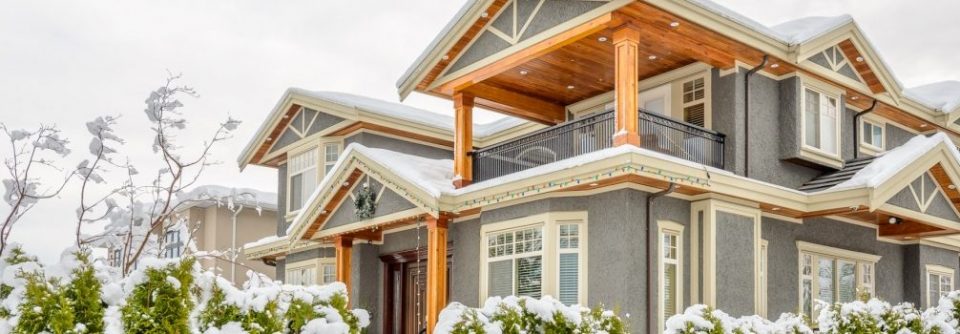
8 Tips for Cold Weather Painting
Posted on June 6, 2019
It is tempting to paint in colder weather to keep you comfortable, but the job could suffer because of the temperature. Water-based exterior paint cannot cure properly if the weather is too chilly. Most paint manufacturers recommend the temperature for proper paint is at least 50° F during application, and go no lower than 32° F overnight while drying. If you take on a painting job during potentially cooler temperatures, here are 8 tips for cold weather painting.
1. Check the forecast.
Make sure to check the extended forecast for several days of dry weather. The temperatures must not go below 50°F during the painting process, and 32°F during drying and overnight. The paint can take up to two days to dry and the temperature must be monitored during this time. If the drying phase is interrupted by low temperatures, a proper cure might not be achieved.
2. Keep the substrate dry.
The weather might be cooler, but the biggest challenge tends to be the moisture in the air. Dew on surfaces can drip from gutters or windows giving moisture a chance to get trapped in one of your coats reducing the longevity of your paint. By waiting until after 10 a.m. to paint, the sun will have a chance to burn off leftover overnight moisture and give you a dry surface to work with.
3. Work midday.
Begin prep work in the early day, but make sure to paint between 10 a.m. and 2 p.m. so surface and paint temperatures are stable and within the manufacturer guidelines. If you end painting by mid-afternoon, the paint should have time to cure before dew and cold temperatures set in.
4. Follow the sun.
During hot weather, painters follow the shade around the building to paint. In cold weather, the opposite stands true. Use the warmth of the sun as you paint so you’ll have a warmer, dryer work space.
5. Use cold weather tools.
Because the temperatures are lower, brushes, rollers and other tools must be used in a thicker paint. For the most part, a nylon/polyester paint brush or chinex blend paint brush will work better because they are generally a bit stiffer to begin with.
6. Use low temperature paint.
Paint has come along way in recent years. There are a good many manufacturers who are now creating paints specifically for use in cold temperatures. These paints are more stable and tend to get lumpy or even freeze.
7. Put off second coats.
Plan ahead to give longer wait times for second coats. The cold weather will make the coats take a significantly longer time to dry. You will not be able to apply the second coat immediately. For some darker pigments, doubling drying time is recommended.
8. Cold weather coatings.
If you choose to use a coating made for cold weather, do not mix it with any thinners. Do not add anything such as antifreeze or chemicals to make it hold viscosity. Confirm your needs with the professional selling you the paint before you make your final purchases.
Cold weather painting can be a challenge, but if you follow these tips, your project is sure to be perfect.





